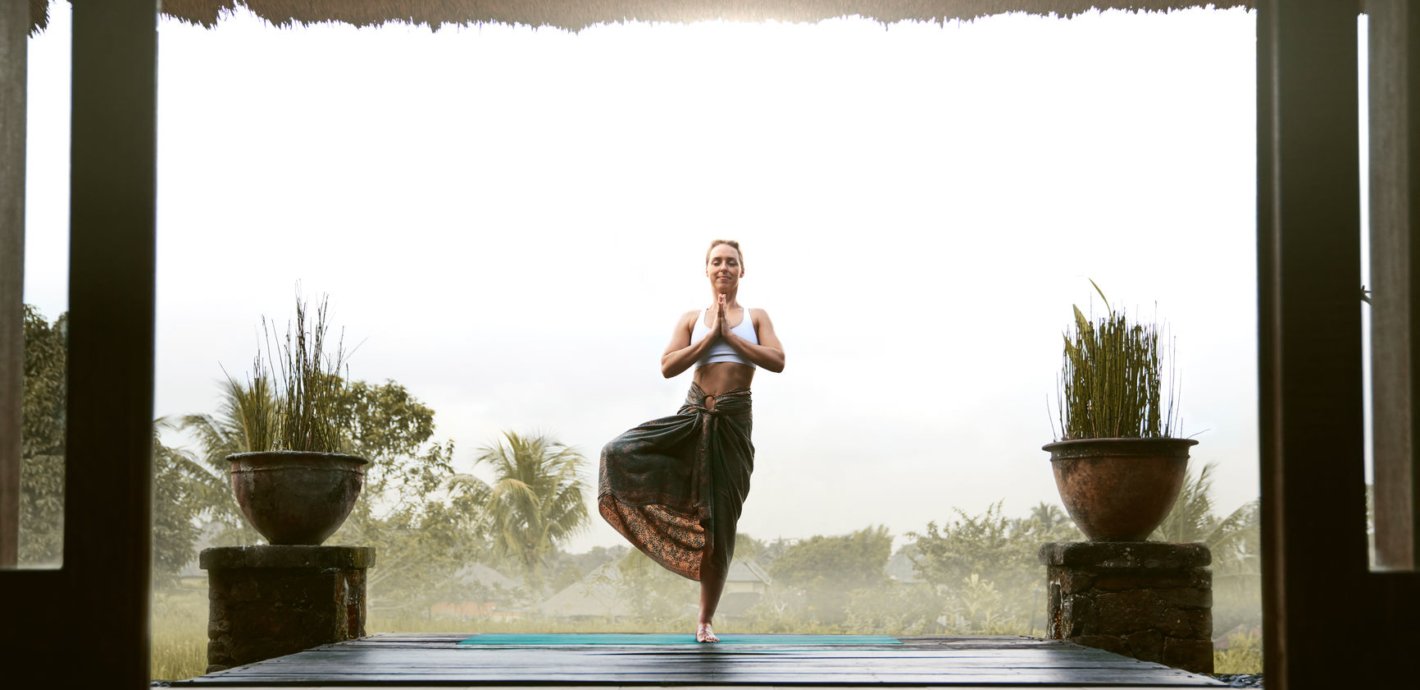When the Venerable George Churinoff, ordained as a monk in the Tibetan Buddhist tradition in 1975, emerged in late May from his mountaintop cabin in North Carolina, he built a bonfire. This ritual concluded his “Great Retreat,” where he spent three years and three months in solitary meditation on the divine manifestations of love and compassion. On the first day of his return to society, he made thanksgiving offerings of prayers and mantras while tossing grains into the fire, dedicating his sustained practice to the benefit of all living beings.
In all this, Ven. George was enacting the ancient practice of yogic retreat, in which a practitioner, having withdrawn from social interactions and worldly activities, undertakes an uninterrupted period of transformative spiritual disciplines, thus, unburdening themselves from preoccupation to focus entirely on a chosen spiritual practice. The benefits of such tapas (or austerity) is considered highly significant in traditional Buddhist and Hindu societies, and those who dedicate themselves to long periods of practice in remote wilderness locations are often cultural heroes and objects of veneration.
The paradigmatic example of a yogic and meditation retreat is seen in the legend of the future Buddha, Siddhartha, who renounced a kingdom to pursue spiritual life and enlightenment. It is no exaggeration to say, in fact, that such practices and ideals are hardwired into the contemplative traditions of India, plus South, East, and Central Asia.
Is Retreat Still Relevant in the Modern World?
The Bhagavad Gita states that, “One who is able to withdraw his senses from sense objects, as the tortoise draws its limbs within the shell, is firmly fixed in perfect consciousness.” For this authoritative source, a deliberate retraction of one’s attention from the world—or at least from one’s preoccupation with experience—is a necessary prerequisite to pursuing the profound goals of yoga. Assuming that condition still holds, it seems that yoga’s greatest rewards and deepest insights are not generally available from 9-to-5, Monday through Friday.
No, this does not mean that you need to quit your job, become a monk, and move to the Himalayan mountains (though it’s tempting in this day and age) to connect with your true self.
When “business as usual” is disrupted for any duration, anyone can experience the powerful and lasting benefits of contemplative practices. All retreats facilitate some degree of rupture from our routinized patterns of behavior and habitual life roles (i.e., parent, friend, partner, worker, etc.). These roles give us life force, but they can also become a liability in the face of a destabilizing life event, like the loss of a job, the ending of a marriage, the sickness of a child. Deprived of a role through unexpected and/or traumatic events, one’s very sense of self can be challenged. Failing to adapt to unfamiliar roles and realities, we experience suffering.
According to the logic of retreat, if an overly rigid sense of identity gives rise to suffering, it is your innate capacity for resilience and healing that is nourished precisely when you loosen your grip of that identity. A yoga and meditation retreat makes this healing process feasible by insulating you from contexts and stimuli that normally reinforce your habitual patterns of thought and action.
Related: The Healing Power of Self-Care Through Ayurveda
Who Has Time for a Retreat, Anyway?
Not surprising, the periodic practice of retreat is an often neglected mode of modern spiritual life. We all have a million excuses not to take the time off that we need. Instead, we aim to take care of ourselves with a 10-minute guided meditation, here and there, (check out our free audio library on Sonima’s meditation channel) and/or fit in a yoga class after work, and still get home in time to reheat leftovers, Netflix, hang with the fam, you name it. Forget three years in a cave, withdrawing sensory attention, like a tortoise. Retreat, as Ven. George experienced it, is uncompromising and unattainable for most.
Fortunately, the consistent message of living contemplative traditions, as well as mind-body scientific researchers, is that, like a yoga and/or meditation practice, a little retreat can go a long way. Because its primary purpose is to free up space for us to grow and discover, a retreat of even brief periods can really help. What’s more, at a very basic level, the specific content of a retreat is less important than the simple act of “getting out of town,” whether physically or just mentally. Modern-day versions of this usually include a digital detox and electronic celibacy. The more comprehensive the retreat, the more one is asked to suspend engagement with the world outside of the retreat to draw one’s attention inward and focus fully on a given practice.
Related: 5 Scientists Proving the Benefits of Yoga and Mindfulness
The word itself carries military connotation, as in making a “retreat” from enemy lines after being routed. A yoga and meditation retreat, however, aligns better with the idea of a strategic withdrawal of forces in order to shore up resources, strengths, and capacities for future engagement. Perhaps a better match is the word “vacation.” Who doesn’t love a vacation? The word, which derives from the Latin meaning “to be unoccupied” and Old English “to vacate,” conveys the idea of abandoning normality, if only temporarily. Vacation is when you literally “vacate” some time and existential space that is normally occupied by set roles and responsibilities, and in that vacated space, you plug in destinations and activities. Vacation, ideally, frees you to focus on people and, places in ways that are typically not possible.
In the same way as vacation, retreat opens up the necessary time and space for transformation to occur, whether in the context of a deliberate contemplative practice or through some other modality of self-discovery (i.e., music, surfing, take your pick).
Moving Toward Balance and Embracing Sanity
In his first post-retreat lecture to a group in New Mexico, Ven. George enthusiastically encouraged his audience not to “mess around” and take the opportunity, soon and often, to undertake retreat. His main message was, “why wait?” If you want your car to last a long time, don’t wait to deal with it once the engine drops out. Keep it maintained with regular servicing in order to maintain its functionality.
To extend the metaphor, a regular contemplative practice is fuel, which—along with healthy food, good sleep, regular exercise, and so forth—promotes balance and functionality in all lives. With retreat, we get the chance to go deep, replace old parts, etc., as a way to ensure our ability to weather difficult conditions in the future. Things don’t need to get bad, nor does one need to go on permanent vacation (however delightful that sounds) to pursue advanced self-care through the practice of retreat.
Many thanks to Ven. George Churinoff for help and inspiration with this article.








Comments (0)